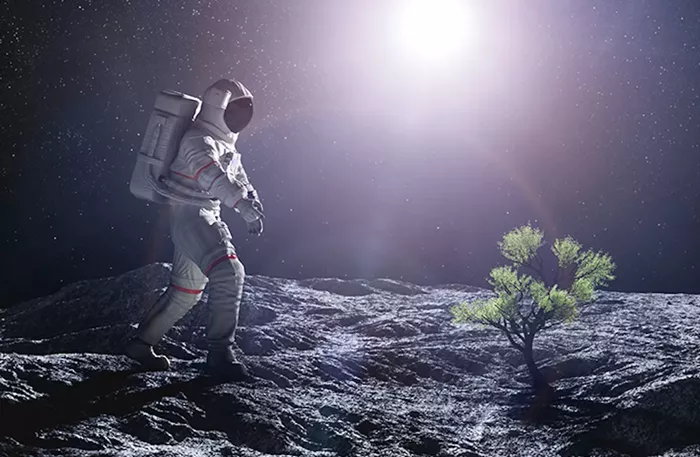Three types of plants are preparing for a journey to the moon as part of NASA’s Artemis III mission, scheduled to launch potentially by 2026. The plants—mustard cress, brassica, and duckweed—will be tested in a “growth chamber” designed to simulate lunar conditions.
Testing Lunar Radiation Effects
The LEAF project, which stands for Lunar Plant Growth, aims to study how lunar radiation affects plant growth. According to Marshall Porterfield, a biological engineer at Purdue University and one of the project’s leaders, the primary focus is understanding the impact of lunar radiation on plants. This research is crucial for developing bioregenerative life support systems, which could support human ecosystems in space missions.
Growth Chamber and Lunar Conditions
Before the launch, the plants will establish themselves in the growth chamber, which will provide air, heat, and internal lighting but will expose them to lunar gravity and radiation. The moon’s surface has no atmosphere and a weak magnetic field, resulting in radiation levels approximately 200 times stronger than on Earth. Additionally, lunar gravity is about one-sixth of Earth’s gravity. Upon completion of the mission, the growth chamber will be divided; half of the plants will return to Earth for analysis, while the other half will remain on the moon.
Monitoring and Analysis
The plants left on the moon will be monitored until they perish from the extreme cold of the lunar night, which can drop below -200 degrees Fahrenheit. One plant species, the mustard cress Arabidopsis thaliana, was selected for its extensive study history, which will help in understanding its adaptation to lunar conditions. The brassica, an oilseed, was genetically modified to grow quickly, and the duckweed is noted for its nutrient content and ability to grow in water.
Porterfield’s Inspiration and Research
Porterfield, inspired by the Apollo 11 mission in 1969, has previously studied plant growth in microgravity aboard the International Space Station (ISS). He will analyze the genetic material from the lunar experiment to assess how plants adapt to increased radiation. Plants left on the moon will be observed via video until their demise in the lunar night. The Artemis III astronauts will not stay for the lunar night, but future missions will need solutions for maintaining warmth.
Future of Lunar Agriculture
Porterfield’s research will focus on how plants react to the real lunar environment, as opposed to previous experiments with lunar regolith, which lacks essential nutrients. Plants are expected to produce substances to shield themselves from radiation. Instead of planting directly in lunar soil, astronauts will use hydroponic systems, which provide nutrient-rich water for plant growth.
Expert Opinions
Jane Shevtsov, a systems ecologist at UCLA who specializes in bioregenerative life support systems, notes that while plant responses to microgravity are well understood, knowledge about their reactions to partial gravity and intense radiation is limited. Previous experiments, such as China’s Chang’e 4 biosphere experiment, faced engineering challenges and did not last as long as planned. Ensuring the success of the LEAF project will require overcoming similar engineering hurdles.
In summary, the LEAF project represents a significant step toward understanding how plants can be cultivated on the moon, potentially paving the way for sustainable life support systems for future space missions.
Related topics:
- Gardener Reveals How to Stop Fungal Disease from Destroying Rose Plants: ‘I Tried This Last Year and It Made a Huge Difference’
- Short Corn Could Replace Tall Cornfields Affected by Climate Change
- Flowers That Paint Themselves: Nature’s Masterpieces


